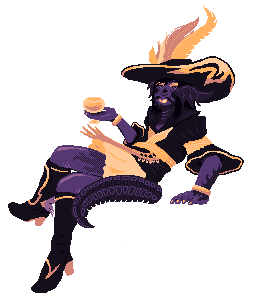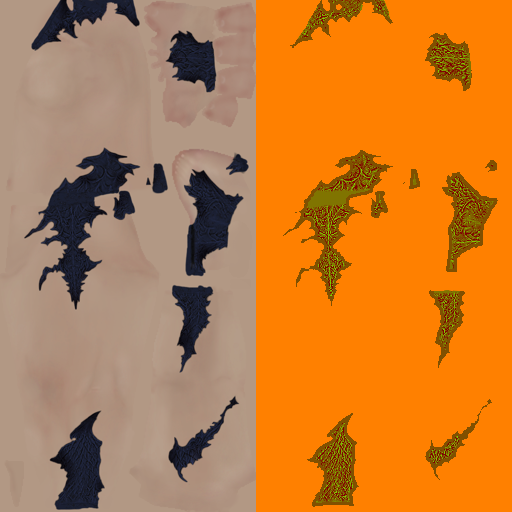About Materials
Materials in FFXIV typically contain 3 of the following 4 textures:
- Colorset, for non-Diffuse shaded objects, stores colour data for different parts of an object.
- Diffuse, the colour of an object.
- Normal, also known as Bump map, contains information used by the lighting engine to simulate geometry.
- Multi, also known as Specular, is a colour-channel based map that stores data for shading an object. The exact purpose of each channel varies per shader.
There are multiple shaders used in FFXIV with different material and texture requirements, listed in FFXIV/TexTools Reference Information.
Some other handy general rules for materials and textures:
- Texture resolution in pixels must always be a power of 2. For instance, a 256x256px texture, or a 1024x512px texture upscaled to a 2048x1024px texture.
- Textures are used by the UV maps of 3D models. For more info on UVs, please check the 3D guides page.
- Objects have a maximum of 4 material slots. You can merge multiple materials together, provided they don't require different shaders. For combining textures and UVs, check out Material Combiner for Blender.
Colorset
The colorset is a tiny texture that determines the colour of clothing items. It's a fast and easy way to change the colour and shading of a piece of gear.
- Each colorset row corresponds to the strength of the alpha channel (for GIMP users: this is easier to see if you convert your layer alpha to a mask).
- As well as diffuse colour, the colorset also controls specular(reflective) and emissive(glow) colours.
- Penumbra Colorset Guide(work in progress)
- Textools' old Colorset guide; archived here. This is a placeholder until I make my own guide(sorry)
Diffuse
This texture is the easiest to use and understand. Usually what colour you see on the diffuse is what you get, but it can still be modified by the colorset or other means.
When importing textures in TexTools, you can add or change a material to use DiffuseSpecular in TexTools' advanced editing menu (found under "More Options"). This is often used when making original items, or porting items from other games.
Normal
Normal maps can be hard to understand at first. If you already understand the basic concept, there are some additional functions used in FFXIV's normal maps:
- Instead of using transparency in the normal map to signify transparency ingame, FFXIV utilises the colour channels as a flag for transparency. A certain shade of yellow comprised of 50% red, 50% green, and 0% blue means that section of the texture will be invisible.
- The transparency value of the normal map, on the other hand, is used to flag areas for use by the colorset. For more information, see Textools' old Colorset guide.
Some additional resources for creating normal maps:
- NormalMapOnline can create a serviceable normal map from a diffuse texture if you need one.
- Hand-painted normal maps are possible for smaller (more shallow in depth) designs if you don't fancy getting into 3d sculpting and normal map baking.
- Bystedt's Blender Baker tutorial shows the more traditional method of normal map creation, or baking (plugin linked on the software page).
Multi
Multi maps, like normal maps, can be strange for beginners to understand. The multi stores "non-colour data" for the shader using the colour channels of an image, varying by each type of shader used.
- Au Ra scales are one of the easier multis to explain with. When Au Ra skin colour is applied to a character model, the scales remain the same colour, and are shinier than skin. The multi works as a kind of "mask" for the scales, telling the shader to pick colour from the diffuse for scale colour (red channel - 100% red being skin colour, 0% red being diffuse colour) and to reflect more light, also known as Specular Intensity(green channel).
- For more information on what the colour channels in a multi control, please check FFXIV/TexTools Reference Information.
- (This section is under construction - I'm not an expert in FF multis. Please reach out if you'd like to help!)


